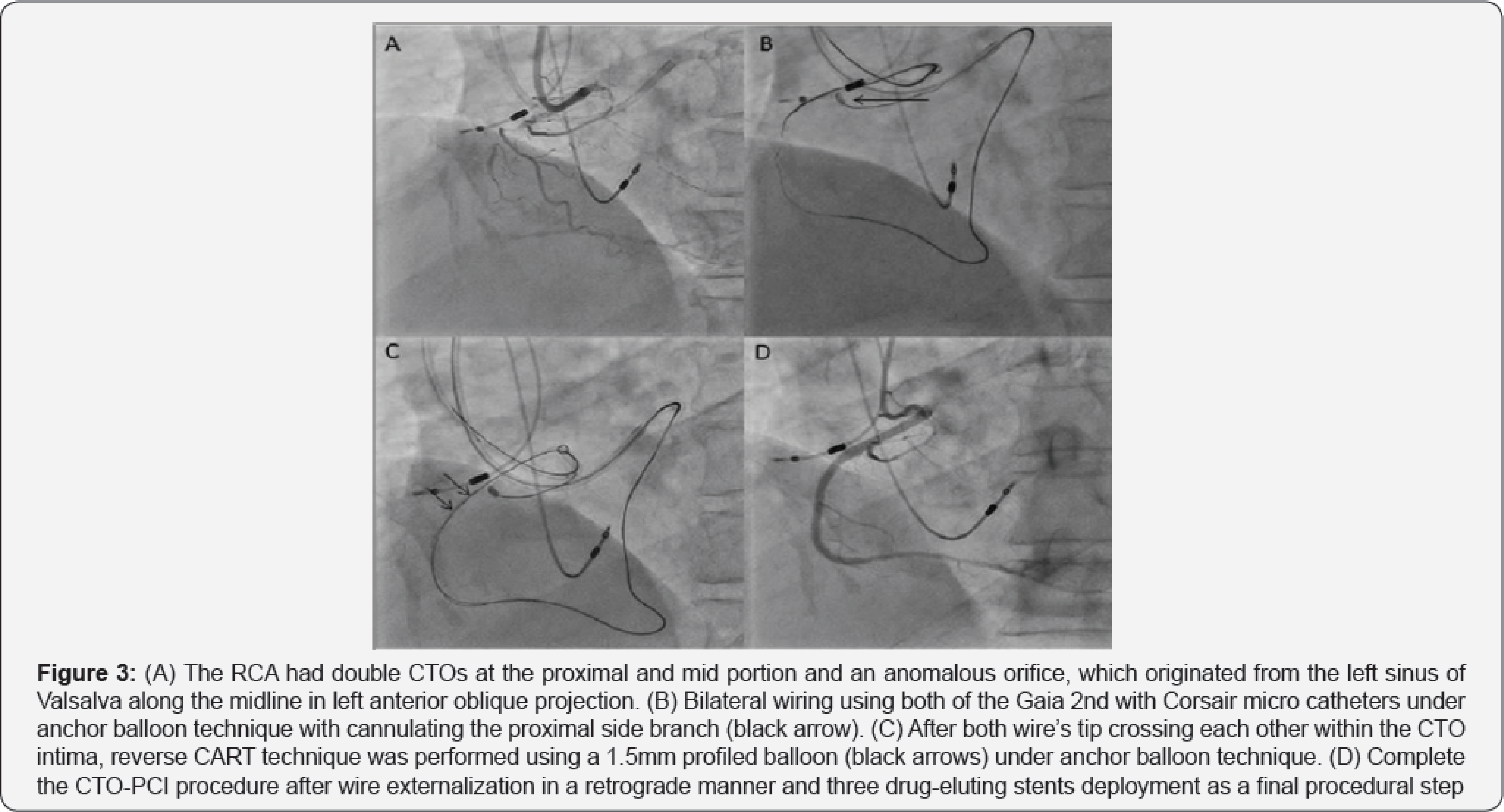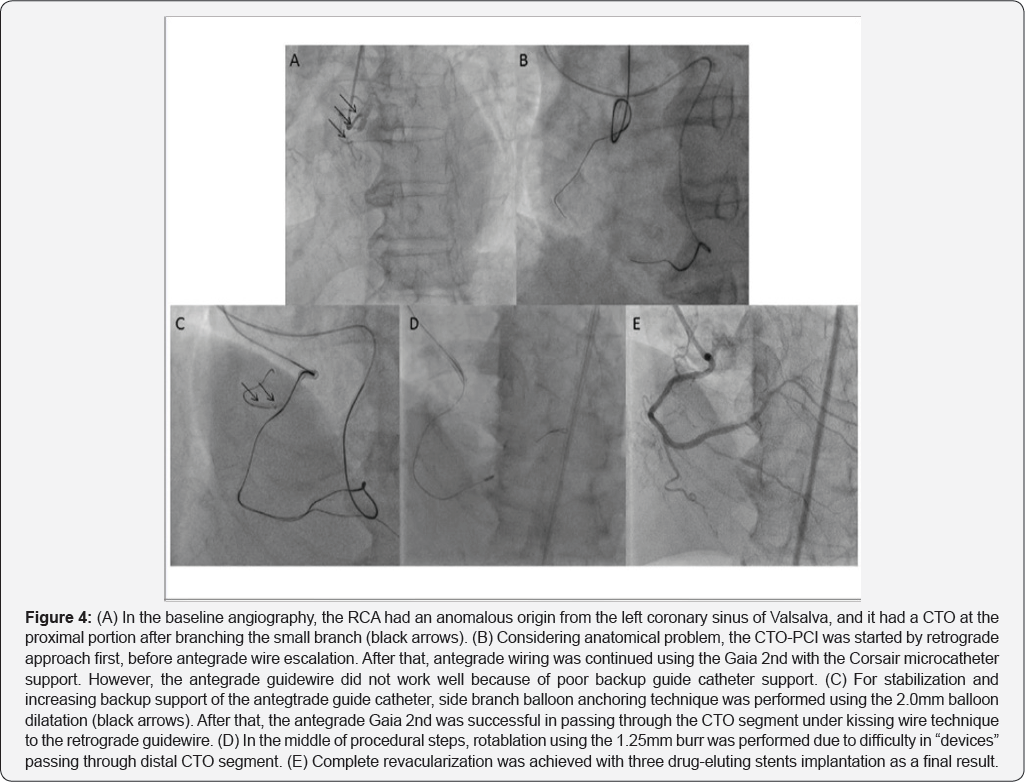Procedural Review of Percutaneous Coronary Intervention against Chronic Total Occlusions in Anomalous Origin of the Right Coronary Artery from the Left Sinus of Valsalva-Juniper Publishers
JUNIPER PUBLISHERS-OPEN ACCESS JOURNAL OF CARDIOLOGY & CARDIOVASCULAR THERAPY
Introduction
Coronary arteries of anomalous origin are uncommon and encountered in 0.2-1.2% of patients undergoing percutaneous coronary intervention and represent a marked deviation of the normal anatomic pattern [1,2]. An anomalous origin of the right coronary artery (RCA) from the left sinus of Valsalva (LSOV) has been reported in 6-27% of patients with coronary anomalies.Moreover, the anomalous origin of the RCA from the LSOV is associated with early development of coronary artery disease and it can cause sudden cardiac death [3].
However, PCIs of anomalous right coronary artery (ARCA) from the LSOV pose considerable technical challenges to the interventionalist due to unusual location and course of this anomaly. Still, CTO-PCIs against ARCA from the LSOV require more technical conditions for appropriate back-up support of guiding catheters to overcome problems such as anatomical anomaly and procedural approach to facilitate successful delivery of appropriate devices.
We reviewed the procedural characteristics of CTO-PCIs against ARCA from LSOV which had been undergone in our cardiac catheterization laboratory. Total 5 CTO lesions with ARCA from LSOV were underwent PCI without any complications. The origins were adjudicated with a schema (Figure 1) based on anatomical landmarks as described by Sarkar et al. [4] in LAO view. Procedural characteristics were summarized in the Figure 2.


One lesion had origin above the ostium of the left coronary artery (LCA) (Type A), two lesions had origin just below the ostium of the LCA (Type B), the remaining two lesions had origin along midline (Type C). All PCI procedures were performed by transfemoral approach and were successfully cannulated guide catheters using the Amplatz Left type in four cases and the Judkins left type in remaining one case. Interventional revascularization was succeed in four cases (80.0%), however was failed in one case because of inability to pass guidewire. Regarding procedural characteristics, four cases (80.0%) were performed by bilateral approach, except one case by successfully antegrade approach by single wire manipulation. Moreover, these all four cases had utilized anchoring balloon technique as well as child-in-mother technique to overcome inadequate guide catheter support due to inability to maintain coaxial position in anatomical condition.


There are disadvantages of prevent selective cannulation and inadequate coaxial support of guide catheters regarding CTO-PCI to ARCA from LSOV. However, development of devices or utilization of procedural means including bilateral approach, various anchoring balloon technique, and child-in-mother technique might make possible interventional revascularization to overcome these disadvantage of anatomical condition now at last (Figure 3 & 4).
For more Open Access Journals in Juniper Publishers please
click on: https://juniperpublishers.com
For more articles in Open Access Journal of
Cardiology & Cardiovascular Therapy please click on: https://juniperpublishers.com/jocct/index.php
For more Open
Access Journals please click on: https://juniperpublishers.com
To know more about Juniper Publishers please click on: https://juniperpublishers.business.site/


Comments
Post a Comment